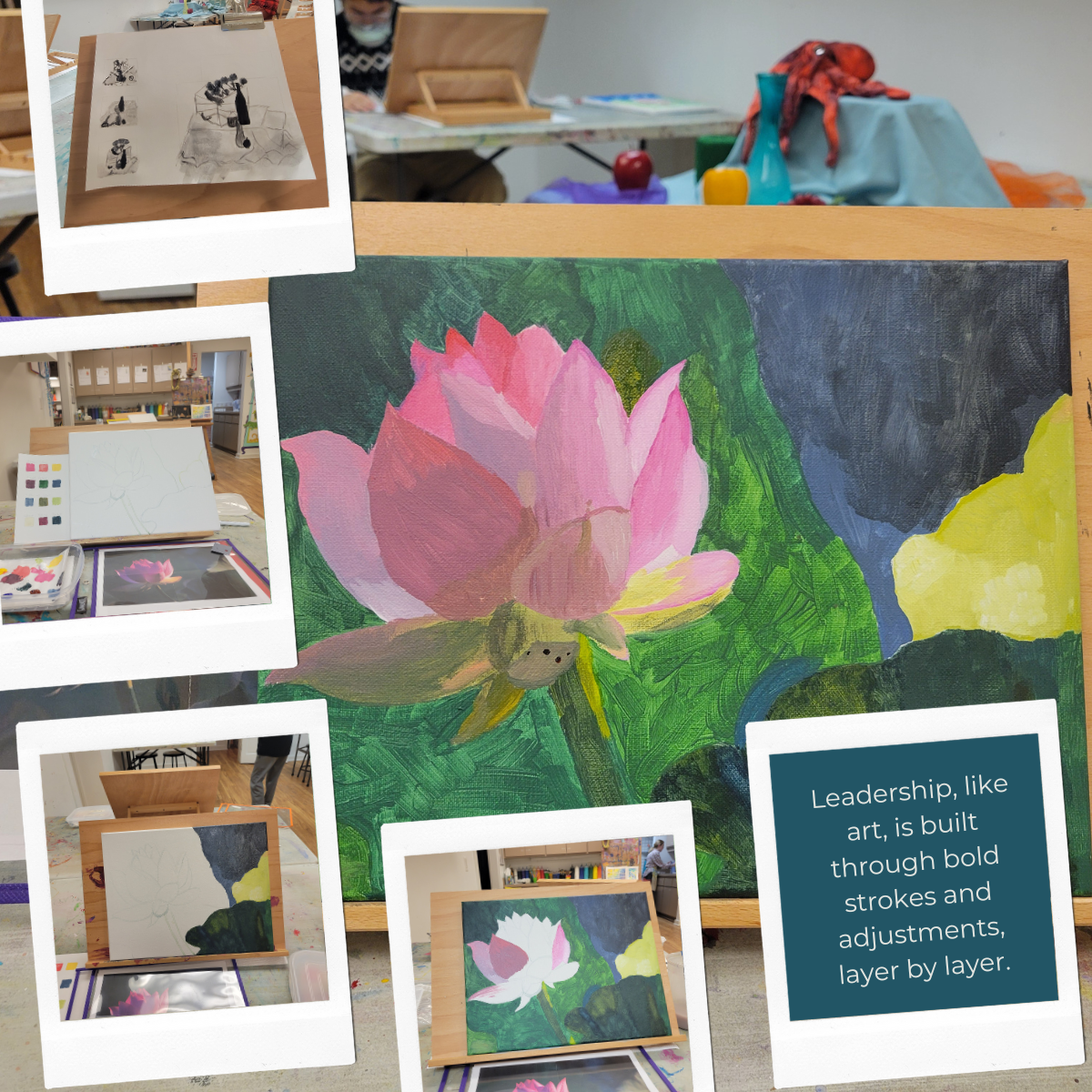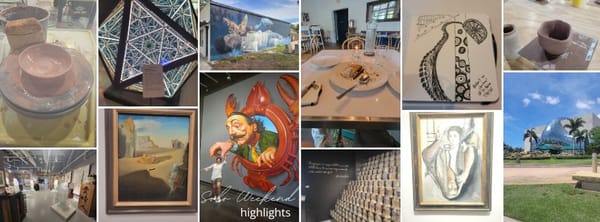The Art of Leadership: Embracing Imperfection and Creativity

A few weeks ago, I signed up for a painting class. I thought it would be a great bonding activity with my child—a way to glimpse into his world. I expected we would start with techniques and structure, learning the fundamentals before putting brush to canvas. But to my surprise, our first task was to sketch still life using paint, no instructions given.
The children dove in immediately. Within an hour, they had completed their pieces, carefree and confident. Meanwhile, I hesitated, agonizing over the details—how to capture the light perfectly, how to make sure the proportions were just right. My instructor gently reminded me: “Art is not a photo—it doesn’t have to be perfect.” Art conveys the essence, not the exact replication.
The Beauty in Imperfection: Leadership and Decision-Making
That moment stuck with me. It made me think about leadership and the paralysis of over-perfection. Too often, leaders hesitate to act, waiting until they have the “perfect” plan, the “perfect” conditions, or the “perfect” execution. The problem? Perfection is an illusion.
Just as I hesitated with my brush, leaders stall with decisions—overthinking, second-guessing, refining endlessly—while others dive in, adjust, and move forward. But hesitation comes at a cost. I’ve seen teams miss market opportunities, delay key initiatives, and lose momentum because they were waiting for the 'perfect' plan that never came. Innovation comes from movement, not hesitation.
Some of the best leaders and operators I’ve worked with understand this deeply. They also recognize that not every decision allows for trial and error. In high-stakes scenarios—whether launching a critical product, responding to a crisis, or making key strategic shifts—calculated caution is necessary. But even then, waiting for perfection can be more damaging than making a well-informed move and iterating along the way. In one case, a research team working on data analysis protocols started with an initial framework. Instead of waiting for perfection, they tested the approach on a small dataset, identified inconsistencies, refined their methodology, and iterated—revisiting earlier conclusions to ensure alignment. They made the best decisions they could with the information available, knowing they could adjust along the way. Action breeds clarity. A plan in motion is easier to refine than one stuck in endless deliberation.
The Role of Creativity in Operational Excellence
As the weeks went by in painting class, I learned to mix colors, identify tones, and layer paint over time. Each class, I built upon what I had already started, gradually refining my canvas. This process reminded me of something familiar: how great operations evolve.
- In business, just like in art, you rarely get everything right on the first try. Strategies require layering—testing, learning, adjusting.
- The best teams don’t chase perfection; they focus on iteration and improvement. For example, a cross-functional team developing a real-time response dashboard during a public health crisis had to continuously adapt. Initially focused on hospital and emergency department volumes, they quickly expanded to track testing availability, PPE supplies, and patient demographics—refining their approach as new data became relevant. Each iteration brought clarity, allowing them to make faster, more informed decisions.
- Creativity isn’t just for artists—it’s essential for operational leaders. When you approach problems with flexibility, rather than rigid formulas, you unlock unexpected solutions.
Bringing It All Together: Leadership as an Evolving Canvas
Leadership, like painting, is about finding balance. Focus too much on the vision, and you risk creating something beautiful but impractical. Get lost in the details, and you may never step back to see the bigger picture. True leadership—like great art—requires knowing when to refine and when to let the brushstrokes be. You need a vision—a direction to move toward—but you also need the ability to adapt, layer, and refine.
The best leaders:
- Make decisions with confidence, not hesitation.
- Embrace creativity and iteration in their approach.
- Trust that clarity comes through action, not over-analysis.
Next time you find yourself stuck in decision paralysis, remember this: leadership is an evolving canvas, not a static masterpiece. High-performing teams don’t wait for perfection—they take action, adjust, and refine. What small decision can you make today to move forward? Sometimes, you just need to pick up the brush and start painting.
